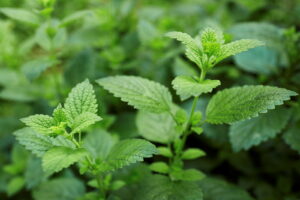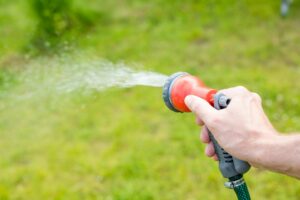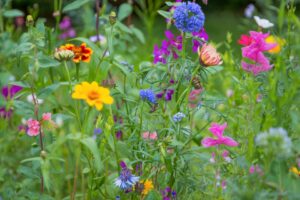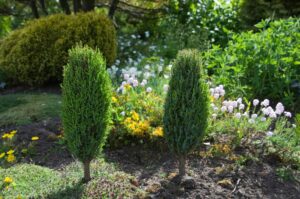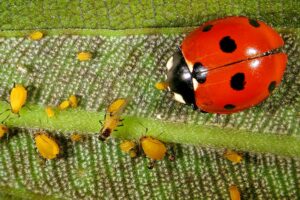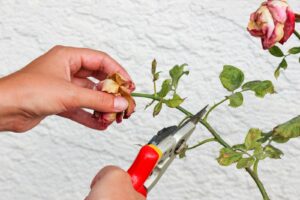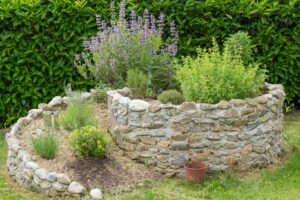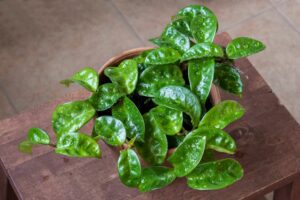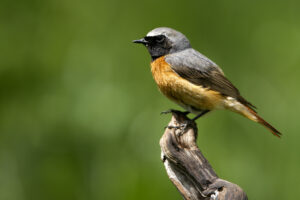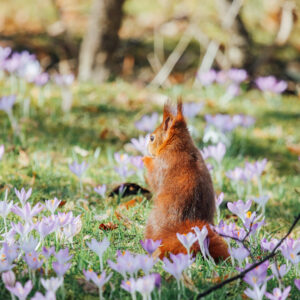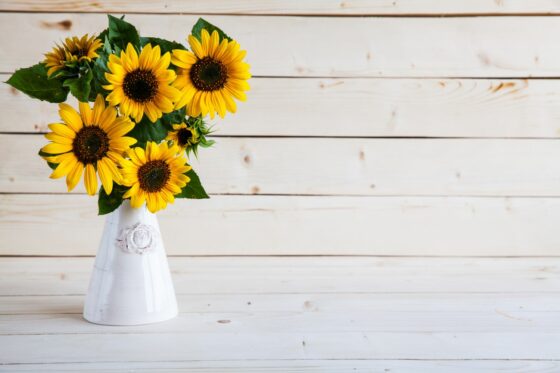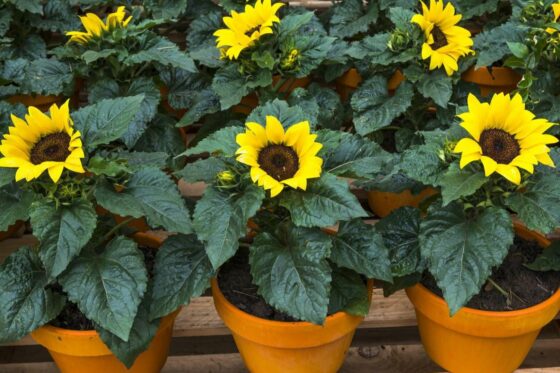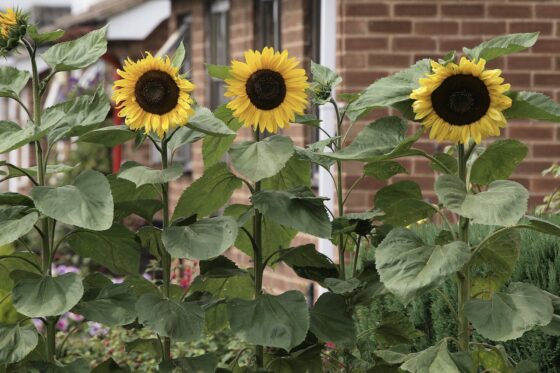Sunflowers: everything you need to know about planting, care & harvesting
Sunflowers are the epitome of summer and exude good humour in every garden and on the balcony. We have some useful tips for your sunflower.

Summer, sun, sunflowers – the genus of sunflowers (Helianthus) embodies the summer soul of the flower world. Whether meter-high specimens in the garden, small varieties for the pot or particularly colourful flowers in the vase: the sun worshippers look good everywhere and become real eye-catchers if they are provided with sufficient sun, water and nutrients. With their nectar and seeds, not only do they provide a source of food for native insects, birds and other animals, but the hobby gardener can also use their own harvest as a healthy snack, for oil production or as seed for the next season.
Contents
Sunflowers: meaning, origin and properties
With its large, yellow flowers, the sunflower is the epitome of the warm season. Not only do the large flowers resemble the sun, but the love of these plants for the life-giving light is so great that the flowers follow the sun all day long. It does not let the sun out of its sight all day and in the evening, saddened by the separation, closes its flower. Like chrysanthemums (Chrysanthemum) and dahlias (Dahlia), the sunflower belongs to the composite family (Asteraceae). The genus consists of 67 species, all of which are native to North America. As early as about 2,500 BC, the sunflower was demonstrably cultivated on this continent. Nowadays, giving a sunflower expresses a sincere “I like you”.
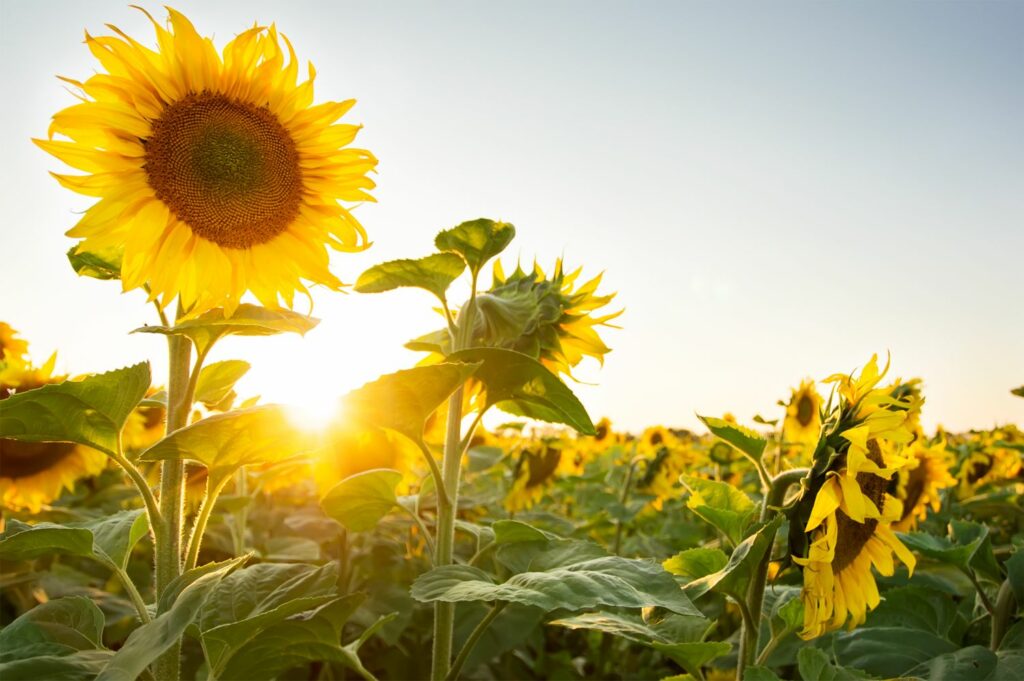
There are both annual and perennial plants that can reach heights of 20 centimetres to 4.5 metres. In Europe, the true sunflower (Helianthus annuus) and the Jerusalem artichoke (Helianthus tuberosus) are the best known cultivated plants. They are used as food, a fodder plant and also for the production of biodiesel. Sunflower seeds are also true vitamin bombs. They contain vitamins A, B, E and F, and are rich in vegetable protein and minerals. The roots are strong and reach deep, so sunflowers loosen the soil for subsequent crops.
When are sunflowers in bloom?
The basket-shaped flowerheads appear between June and October, depending on the species. The large composite flowers hold thousands of small ray florets, each of which then produces a single sunflower seed.
Sunflower species: diversity in growth and flower colour
The sunflower genus (Helianthus) comprises 67 species. Among them are annual species such as H. annuus, but also perennial species such as H. decapetalus or H. microcephalus. But it is not only the longevity of the species that differs. Countless varieties present themselves with single, semi-double or double flowers. Small-statured varieties like ‘Double Dandy’ or ‘Little Leo’ do especially well in pots, whereas large varieties like ‘Prado Red’ or ‘Sonja’ will turn your flowerbed into a sunny sea of blooms. Flower colours range from typical yellows as with ‘American Giant’ to orange varieties such as ‘Sunrich Orange’ and even multicoloured varieties such as the red and white ‘Floristan’.

Here, we have put together a larger selection of annual and perennial sunflower species for growing in the flowerbed and pots.
Buying and caring for sunflowers in a pot
With sunflowers in a pot, you can make the sun rise in any place. However, when buying plants, you should always think about the subsequent size of the adult plant. After purchasing, it is important to ensure a sufficient supply of water and nutrients, which these small energy power plants use up quickly by producing large amounts of biomass.

Sunflowers in pots: what to consider when buying
Always ask in the store for the exact variety of sunflower. They range in height from 30 centimetres to several metres. Small cultivars such as ‘Pacino’, ‘Sunspot’ or ‘Orange Sun’ are best suited for growing in pots. Apart from this, plants in the store should not be standing in water, nor should the soil be completely dry. Yellowish and brown leaves indicate improper care and an ailing plant. It is best to choose a beautifully growing plant that has strong green leaves and flowers that have not yet all opened. Always check the plant for pest infestation as well.
Caring, fertilising, and watering sunflowers in pots
Sunflowers need sun, whether in a pot or in the flowerbed. They are only truly happy in a placed exposed to full sun. The light gives the plants a lot of energy, which makes the growth of these sun worshippers really explode. For this reason, the cheerful flower requires oodles of water and fertiliser. For successful care, the following applies:
- Watering: Very high water consumption; always keep the soil moist; avoid waterlogging.
- Fertilisation: During the growth phase, fertilise regularly with a slow-release fertiliser, such as our Plantura Flower Food. After flowering, moreover, the flower does not need to be cut off.

More detailed information about growing sunflowers in pots can be found here.
Pre-growing and sowing sunflowers
The distinctive striped sunflower seeds are not only great to eat but also to propagate the plants. So, for annual sunflowers, you can save some of the precious harvest to have seeds ready for the next year. The seeds are sown in March in a large pot with a drainage hole and saucer.

- Perfect for flowering plants in the garden & on the balcony
- For healthier plants with beautiful & long-lasting blossoms
- Long-lasting fertiliser that is free from animal products - child & pet friendly
Proceed as follows when sowing sunflowers:
- Spread a drainage layer of gravel or clay shards on the bottom of the pot
- Fill pot with potting soil or a mixture of garden soil and mature compost
- Sow seeds about 1 cm deep in the soil (dark germination)
- Water the soil well
- Keep soil moist at all times, water regularly and thoroughly
- Habitat: Sunny to partial shade; windowsill
- Temperature: About 15 – 20 °C
- Germination time: 8 – 14 days

Always expect some seeds to fail when sowing. Therefore, plant more seeds in the pot than you ultimately want to have. If too many sunflower seeds have germinated and the pot has become too small, the seedlings should be pricked out or placed in their own pots at least ten centimetres apart. This is the right time to thin out and discard any weak, small plants. After pricking, water well again and continue to keep the soil moist. Sunflowers still need a lot of water during germination and as a young plant. Once the plantlets have reached a height of 30 centimetres, they will need less water. From mid-May onwards, you can finally plant out these small sun-like plants.
Planting and caring for sunflowers in the garden
Whether large varieties as background plantings or even small ones as bright splashes of colour among other greenery, sunflowers make wonderful additions to any flowerbed, because the mere sight of the sun worshippers puts you in a good mood. However, in order for the flowers to keep on shining into autumn, they need proper care.
Planting sunflowers: when and how?
Sunflowers are planted in mid-May, when there is no longer a danger of frost. To do this, place the plant in a planting hole twice the circumference of the root ball and fill it with a mixture of garden soil and compost. The distance between plants should be about 50 cm. The soil should be lightly pressed and then generously watered.

Learn more about planting sunflowers, whether in a flowerbed or pot, here.
Watering and fertilising sunflowers in the flowerbed
The sunflower likes to bathe in sunlight, but unfortunately a lot of water is lost through evaporation. The plant has to take this up again through its roots. Therefore, water sunflowers in the flowerbed generously as soon as the top layer of soil has dried. In summer, you may even have to reach for the watering can twice a day. Always water only in the morning or evening. Fertilising during growth is best done with a plant-based fertiliser. Our Plantura Flower Food is excellent for sunflowers and also strengthens soil life, making it less harmful to our environment than mineral fertilisers. From September onwards, perennial sunflowers should no longer be fertilised.

- Perfect for flowering plants in the garden & on the balcony
- For healthier plants with beautiful & long-lasting blossoms
- Long-lasting fertiliser that is free from animal products - child & pet friendly
Sunflowers: sowing directly in the flowerbed
Sunflowers are also easily be sown directly in the flowerbed. The seeds are sown two to three centimetres deep in April. The garden soil should be mixed with compost beforehand and kept constantly moist after sowing. At temperatures around 15 to 20 °C, the first seedlings should show in 14 days at the latest.

Sunflower in vase
Sunflowers also exude their summer charm as cut flowers in a vase. Here, however, it is important not only to put the vase in the best possible light, but with the right cut and under optimal conditions you can get the most out of the cut flower and make it last much longer in the vase.
Cutting sunflowers for the vase
It is best to cut them in the early morning of a dry day. To do this, choose a flower that has already opened slightly, but not yet fully. Now proceed as follows when cutting the selected sunflower:
- Use clean and sharp pruning shears
- Cut flower to the desired stem length
- Discard the lower leaves
- Cut surface at an angle
- Make an incision about 2 cm deep on the cut surface
- Immerse cut surface in hot water for a few seconds

The cut sunflower is then placed in a vase filled with fresh water in a place protected from direct sun and drafts.
Caring for sunflowers in a vase
Even if cut flowers stop growing, they need a certain amount of care. Therefore, trim the cut surface every two days. You should even change the water in the vase every day.

You can also find more information about caring for sunflowers in a vase here.
Harvesting sunflower seeds from your own garden
After flowering, the flowerheads are left on the plant, because the seeds continue to ripen there. The seeds ripening on the plant can also be covered with a permeable fabric to keep birds away. They should be harvested as soon as the flowerhead is completely dry. It will then hang down and the sunflower seeds can be easily removed. Pull the bird repellent fabric together at the stem and close it. After that, the flower head is cut off and hang in a dry, airy place. In this way, the seeds will fall into the fabric all by themselves and can be collected after a few days. Alternatively, you can cut off the head after flowering and let it ripen and dry indoors. Until sowing, the seeds should then be stored in a dry, cool, airy and dark place.

Sunflowers not only make a good figure at the wayside, they are also colourful eye-catchers in a vase. In this article you will find the best tips for sunflowers in a vase.


